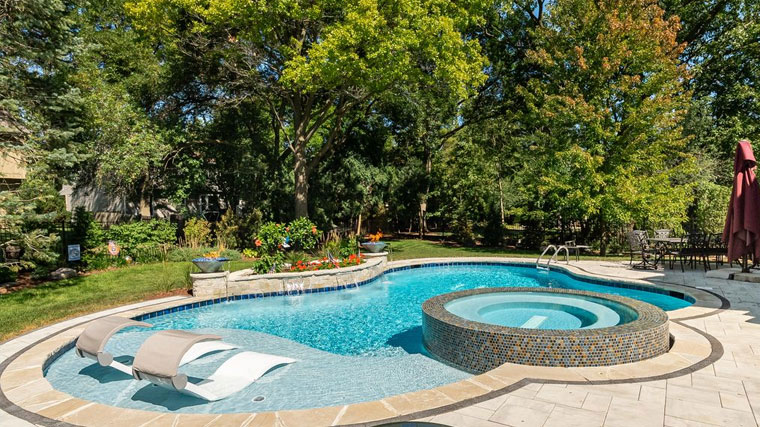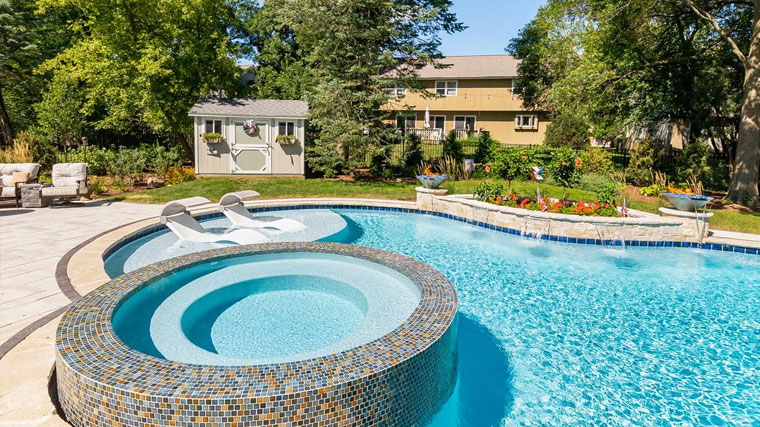
Nobody wants a swampy swimming pool. Algae growth can turn your backyard oasis into a murky mess, but fear not! With the right approach, you can conquer algae and keep your inground pool sparkling clean. Here’s a comprehensive guide to eliminating algae from your pool and preventing it from returning.
Understanding Algae Growth
Algae are microscopic plants that can thrive in your pool, particularly when there is an imbalance in water chemistry, poor circulation, or inadequate sanitation. They grow quickly in warm, sunny conditions and can turn your pool water green, yellow, or even black.
Identify Your Enemy
The first step is to determine what kind of algae you’re facing. Here are the common culprits:
- Green Algae: The most common type, it appears as slimy green spots or films on the pool walls and floor.
- Black Algae: This stubborn variety forms black or brown patches, usually in shaded areas or cracks.
- Mustard Algae: This yellow or brown algae is particularly hard to eliminate and tends to resist chlorine.
Steps to Get Rid of Algae
1. Test and Balance Your Water
- Test the Water: Use a pool test kit to check your pool’s chemical levels, particularly pH, chlorine, and alkalinity.
- Adjust the Chemicals: Ensure your pool’s pH is between 7.2 and 7.6, alkalinity between 80-120 ppm, and calcium hardness between 200-400 ppm.
2. Shock the Pool
- Superchlorination: Add a large dose of chlorine to the pool to kill the algae. Use calcium hypochlorite shock and follow the manufacturer’s instructions, typically adding 1 pound per 10,000 gallons of water.
- Timing: Shock your pool at dusk or nighttime to prevent sunlight from burning off the chlorine quickly.
3. Brush the Pool
- Brush the Walls and Floor: Use a stiff pool brush for green and black algae, and a softer brush for mustard algae to avoid spreading spores. Pay extra attention to corners and steps where algae can accumulate.
- Frequency: Brush multiple times daily during treatment for best results.
4. Run the Pool Filter
- Continuous Filtration: Run your pool filter continuously for at least 24-48 hours after shocking the pool. This helps remove dead algae and prevents it from settling back into the pool.
- Backwash the Filter: Clean your filter regularly during this process to maintain its efficiency.
5. Vacuum to Waste
- Manual Vacuuming: Use a manual pool vacuum to remove dead algae from the pool floor. Set your filter to “waste” if possible to avoid clogging.
- Automatic Cleaners: If you use an automatic pool cleaner, ensure it’s running properly and empty any collected debris frequently.
Use Algaecide
- Apply Algaecide: Use an algaecide after shocking, following the product instructions. Choose a type based on your algae (e.g., copper-based for stubborn algae).
- Distribute Evenly: Pour the algaecide around the perimeter of the pool to ensure even distribution.

Prevention is Key
1. Maintain Proper Chemical Levels
- Regular Testing: Test your pool water at least twice a week and adjust chemicals as needed.
- Consistent Chlorination: Keep your chlorine levels between 2-4 ppm and use a stabilizer (cyanuric acid) to protect chlorine from sunlight.
2. Improve Circulation
- Check Your Pump and Filter: Ensure your pool pump and filter are working efficiently and running for the recommended 8-12 hours a day.
- Use Pool Jets: Adjust pool jets to improve water circulation, particularly in corners and areas with poor flow.
3. Regular Cleaning
- Brush and Vacuum Weekly: Regularly brush the pool walls and floor and vacuum to remove debris and prevent algae build-up.
- Skim the Surface: Use a pool skimmer to remove leaves and other organic matter from the pool surface.
4. Shock Regularly
- Routine Shocking: Shock your pool every 1-2 weeks, especially after heavy use or rainfall, to keep algae at bay.
Additional Tips
- Phosphate Removers: Algae feed on phosphates. Using a phosphate remover can reduce the nutrient levels in your pool, making it harder for algae to grow.
- Natural Alternatives: Consider using enzymes or bacterial treatments, or switching to a salt water system for a more natural approach.
- Cover Your Pool: When not in use, cover your pool to reduce sunlight exposure and prevent debris from entering the water.
Conclusion
Dealing with algae in your inground swimming pool can be a hassle, but with consistent maintenance and the right treatments, you can keep your pool clear and inviting. Regular testing, cleaning, and proper chemical management are key to preventing algae growth. If you need further assistance or professional pool maintenance services, contact Sunset Pools & Spas. Our experts are here to help you enjoy an algae-free swimming season.